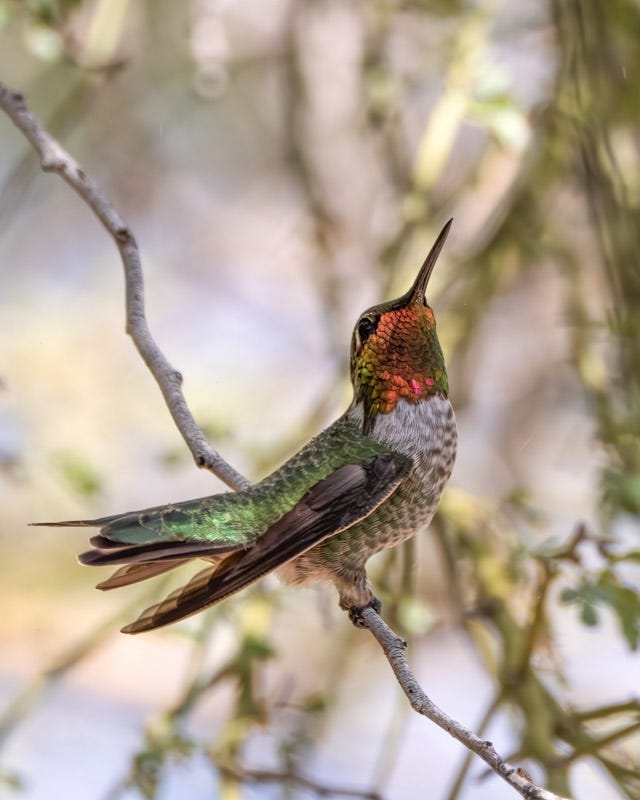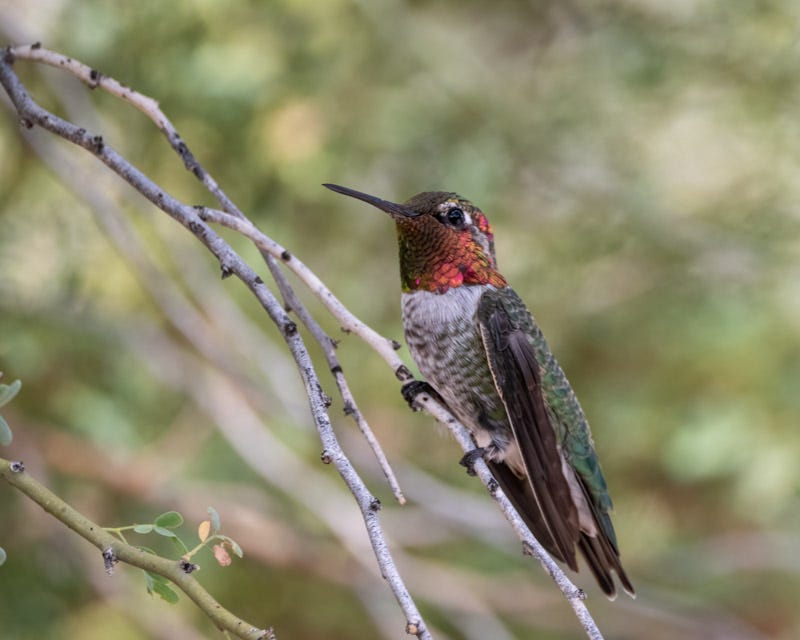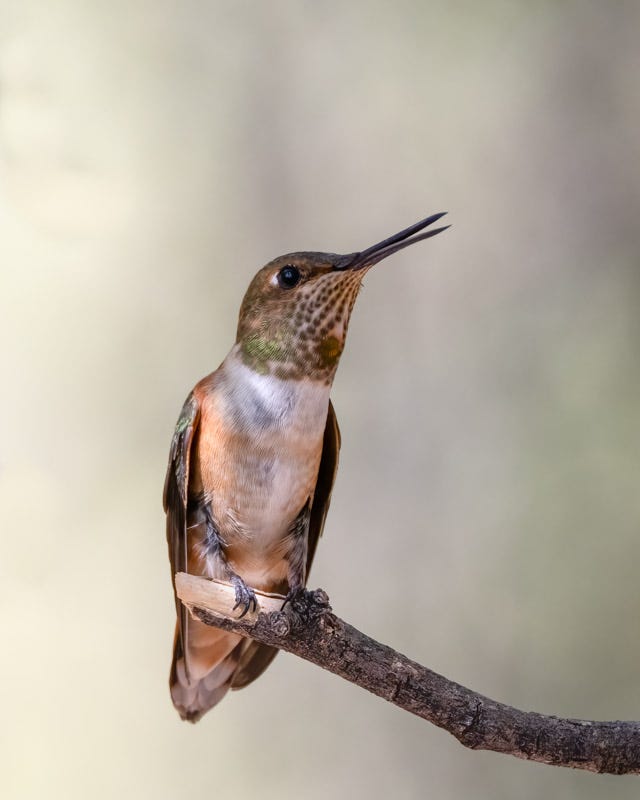Hummingbirds With Orange and/or Rufous Feathers
Sept. 7, 2024: Anna's and Rufous Hummingbirds visit my back porch
This is the photo of the female Anna's Hummingbird I shared in the last email. Female Anna's have a dotting of gorget feathers on their necks.
On the other hand, the male Anna's Hummingbird has a flaming gorget. In some light it flashes pink or red. Other times, including these days in my yard, the iridescence is a glowing orange.
I'm not sure what the Anna's was doing but it held this pose for many seconds. It was not opening and closing its tail feathers- it just held them open while it looked around.
With the male Anna's looking straight forward, iridescent feathers are showing on both its neck and on its head. You can see that the Anna's has grayish underparts. Some of the other hummingbirds have more white-feathered bellies.
Anna's Hummingbirds are West Coast Birds. In Tucson, many friends commonly have Anna's Hummingbirds in their yard. For me, the most common backyard hummingbird is the Costa's, which I have year-round. Anna's are just occasional visitors. Birdnote talks about how the Anna's seems to be more of a city bird: https://www.birdnote.org/listen/shows/annas-hummingbird-thriving-our-shadow
The current pair of Anna's in my yard may just be here due to migration season. I do hope they decide to spend the year. Anna's Hummingbirds extended their year-round range during the past century thanks to urbanization and the introduction of many non-native plant species. Birdnote tells us how they adapted to living year-round far north compared to other hummingbird species. https://www.birdnote.org/listen/shows/annas-hummingbirds-winter-north
I've been enjoying seeing this great hummingbird during this past week. It is such a treat for me. Tucson Audubon posted a nice blog on this special little bird: https://tucsonaudubon.org/bird_profile/annas-hummingbird/
As the subject line of this email suggests, there was another really nice hummingbird visiting my backyard this week. Although I may have had this species in my yard in the past, I never saw it. My having to (or getting to) spend time every day on my porch during migration season brought me some great sightings- a Rufous Hummingbird in the yard for several days now!!
Adult Rufous Hummingbirds are a brilliant orange color. The bird in my yard is an immature male, likely hatched this summer and on its way south for the winter. This young male has "rusty-washed" sides and a spot of orange gorget feathers growing in. Rufous Hummingbirds have an incredibly long migration every year :https://www.birdnote.org/listen/shows/migrations-tiny-bird-epic-journey
This range map from allaboutbirds show how long the Rufous's migration route is:
Although Rufous Hummingbirds have short wings that don't reach the end of their tails, they do have very oversized attitudes. Allaboutbirds. org describes their behavior as "They are pugnacious birds that tirelessly chase away other hummingbirds, even in places they’re only visiting on migration."..."They may make life difficult for any other hummingbird species that visit your yard."... "When not feeding they perch nearby, then launch themselves after any other hummingbirds that appear. All ages and both sexes are aggressive, even during brief 1-2 week stopovers in the course of migration”. The Rufous below was always on alert!
Watching this hummingbird was very entertaining as it barely perched for more than a few seconds at a time. It guarded two feeders constantly and was always on the lookout to make sure no other hummingbird dared to approach "its" feeders. With its long migration combined with the aggressive lifestyle, Rufous Hummingbirds always have a big appetite: https://www.birdnote.org/listen/shows/thirsty-rufous-hummingbird
With my backyard as one stopover point, this has been a fun hummingbird migration season to observe.













